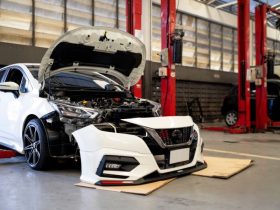Every morning at dawn, before Singapore’s business districts stir to life, scrapyard Singapore workers begin their quiet ritual of transformation, turning yesterday’s treasured possessions into tomorrow’s raw materials in a cycle that speaks to something profound about our relationship with the objects that define our lives. These industrial spaces, tucked away in Tuas and Jurong, represent more than mere recycling operations—they are repositories of personal histories, economic realities, and the invisible labour that keeps our consumer society functioning.
The People Who Make It Possible
Walk into any scrapyard at 7 AM, and you’ll meet Raj, a 45-year-old former construction worker whose steady hands now dismantle the cars that once carried Singapore families to school runs and weekend getaways. His story mirrors that of dozens of workers who found their way to scrapyard work not by choice, but by necessity. After a workplace injury ended his construction career, Raj discovered that scrapyards offered something increasingly rare in Singapore’s economy: stable work that doesn’t require perfect English or advanced qualifications.
“Every car tells a story,” Raj explains, pointing to a silver sedan with child seats still strapped in the back. “You see the wear patterns on the steering wheel, the coffee stains, the scratch marks from loading shopping bags. These aren’t just vehicles—they’re pieces of people’s lives.”
The workforce in Singapore’s scrapyards reflects the city-state’s complex relationship with foreign labour and economic opportunity. Many workers are older Singaporeans who’ve aged out of other industries, alongside foreign workers seeking honest employment in a sector that demands physical capability rather than credentials.
The Emotional Geography of Disposal
For every worker like Raj, there are countless Singaporeans who arrive at scrapyard gates carrying more than just car keys. They bring the weight of financial decisions forced by circumstances beyond their control. The COE system, while efficient for traffic management, creates emotionally charged moments when families must surrender vehicles that represent significant financial investment and personal memory.
Mrs. Chen, a retired teacher, recently brought her late husband’s Camry to a scrapyard after three months of internal debate. The car had been impractical for her needs since his passing, yet selling it felt like erasing his presence. The scrapyard represented finality in a way that traditional car sales couldn’t.
These emotional dimensions of disposal reveal how scrapyards function as informal grief counsellors for a society processing loss—whether of loved ones, financial stability, or simply the passage of time that makes familiar objects obsolete.
The Hidden Economics of Recycling
Behind the seemingly straightforward transaction of trading a car for cash lies a complex web of global commodity markets, environmental regulations, and labour dynamics that most customers never see. Scrapyard operations depend on fluctuating prices for steel, aluminium, and copper that can change weekly based on international demand.
The economic reality shapes everything:
- Material sorting: Different metals command vastly different prices, requiring skilled workers to maximise recovery
- Storage costs: Holding materials until prices improve requires significant space and capital
- Processing equipment: Advanced machinery represents major investments that smaller operators struggle to afford
- Regulatory compliance: Environmental standards require ongoing investment in proper handling systems
- Market timing: Understanding when to sell different materials can determine profitability
Workers like Raj have developed sophisticated understanding of these market dynamics. They can estimate a vehicle’s scrap value within minutes, factoring in current metal prices, processing costs, and seasonal demand patterns. This knowledge represents a form of economic literacy that formal education systems rarely teach.
The Environmental Imperative
Singapore’s scrapyards operate under some of the world’s strictest environmental regulations, transforming what was once a dirty industry into precision environmental management. Modern facilities must capture and process all fluids, ensure proper handling of hazardous materials, and maintain detailed records of material flows.
This environmental transformation has created new categories of skilled work. Environmental compliance officers, fluid management specialists, and materials recovery technicians now work alongside traditional dismantlers and sorters. The result is an industry that employs more people than traditional scrapyards whilst delivering better environmental outcomes.
The Social Infrastructure We Don’t See
Beyond their primary function, scrapyards serve as informal social infrastructure for working-class communities. They provide employment for people whom Singapore’s increasingly white-collar economy has left behind. They offer spaces where practical skills matter more than educational credentials, where experience and reliability count for more than youth and polish.
As one veteran scrapyard operator reflects: “People see us as the end of the line—where things go to die. But we’re actually the beginning. Every piece of metal we process becomes something new. Every worker we employ gets another chance. Every family that brings us their old car gets resources to move forward. We’re not about endings—we’re about transformations.”
The Future of Waste and Work
Singapore’s transition toward electric vehicles and autonomous transportation will fundamentally reshape scrapyard operations. New types of materials, different environmental challenges, and changed economic equations will require adaptation from both workers and operators.
Yet the human elements will likely remain constant. People will continue to form emotional attachments to their vehicles. Economic pressures will continue to force difficult disposal decisions. Workers will continue to find dignity and purpose in the transformation of waste into resource.
The stories of individual resilience, community support, and economic survival that play out daily in these industrial spaces reveal fundamental truths about how societies adapt to change whilst caring for their most vulnerable members through scrapyard Singapore operations that serve as both economic necessity and social safety net.






